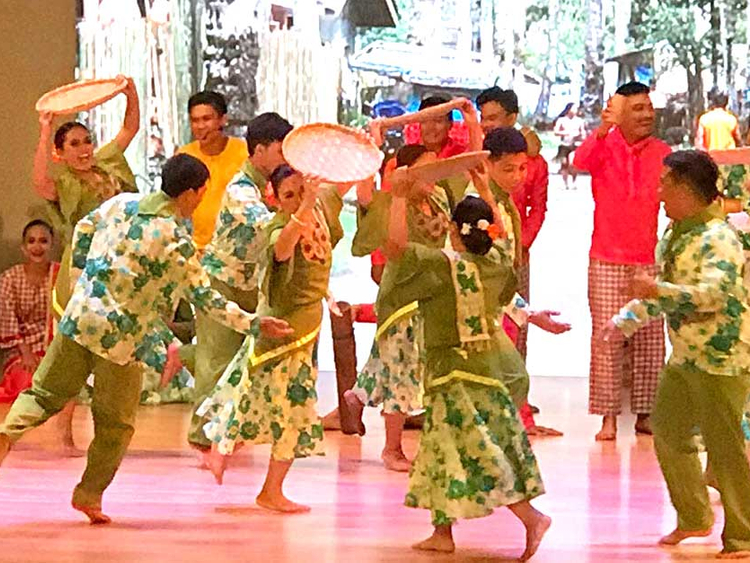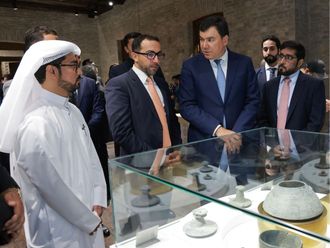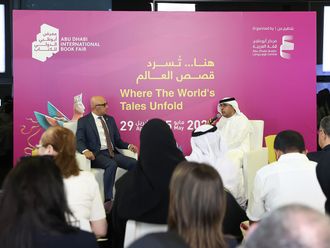Dubai: Of the Philippines’ more than 7,000 islands, Limasawa is perhaps one of the easier ones to recall.
It was the site of the country’s first Catholic mass - a historical nugget that is virtually embedded in the collective psyche of a nation that is now one of the three largest Catholic countries in the world. Limasawa has even been immortalised in pop culture by the late novelty singer Yoyoy Villame’s Magellan:
On March 16, 1521,
When Philippines was discovered by Magellan
They were sailing day and night across the big ocean
Until they saw a small Limasawa island
Magellan landed in Limasawa at noon...
It is unfortunate that beyond this historic snapshot, Limasawa remains a mystery to the vast majority of Filipinos, including expatriates in the UAE.
Perhaps the island’s remote location near the edge of the Pacific Ocean is one of the reasons it is relatively unexplored. Perhaps people have been put off by tales of difficult journeys across treacherous waters that one must endure to reach Limasawa.
Video by Irish Eden Belleza
Retelling the legend of Limasawa
The recent cultural presentation “Limasawa” in Dubai aims to address the perceived disinterest in this historically important island by filling in historical gaps and retelling forgotten accounts about the island through a colourful display of dance and songs.
The show, presented by students and teachers from Leyte Normal University (LNU), has reached various audiences, including Dubai when the group recently performed at the Shaikh Rashid Auditorium of the Indian High School in Oud Metha.

In reliving the legend of the mystical Limasawa island, the dance drama tells the story of Rajah Kolambu and his five wives. It is said that his polygamous relationships were how the island got its name - Limasawa is a portmanteau of the Visayan words lima, which means five, and asawa, which means wife.
Limasawa, now a municipality of the province of Southern Leyte with a population of around 6,000, certainly remains in the consciousness of Filipinos, but it is not talked about with as much fanfare and excitement as, say, Boracay, Palawan or Bohol.

Introducing the nuances and colourful stories about the island’s history may be one way of making people appreciate the local culture more, says Dr Jude Duarte, President of LNU.
“We want to share the deep culture of Leyte and Limasawa for all the Filipino people,” Dr Duarte.
A cultural re-education
Jonathan Gulmatico, a freelance eventologist, says organising such cultural presentations about Philippine history is even more significant for overseas Filipinos. “There are many Filipino children who have been studying and living here in Dubai and have not heard about these stories,” says Gulmatico, who was one of the hundreds who watched the show. “We have so much to offer in our cultural heritage. Programmes like this should be held often in Dubai. It is very culturally oriented and very educational as well.”
Anthony Bon Louis Cubillas, a 16-year-old student in Dubai, describes the event as an eye-opener for young Filipinos living abroad. “It’s really a good show for people who did not have much knowledge about the history of the Philippines,” says Cubillas, who hails from Butuan City but has now lived in Dubai for five years with his parents. “It really opens your eyes where you’re coming from.”
Cubillas’ younger brother, Anton Bon Lloyd, 14, looks forward to more such shows in Dubai. “Seeing an event like this shows us the cultural importance of the Philippines,” says Anton. “It helps us to know more about the history of the Philippines, especially for young people like me. I would like to see more shows like this so that we can know more about our history and what we had to go through to become what we are now.”
More than a show
The event also displayed the performers’ versatility as they opened the show with renditions of different Broadway musicals and Hollywood theme songs, including the more recent How Far I’ll Go from Disney’s Moana, which drew an appreciative applause from the younger audiences.

For a good chunk of the audience, the succeeding acts were an immersion into a culture that was perhaps unfamiliar even to many Filipinos. But more than a show, Duarte says the presentation also served as a tool to connect cultures and carry forward the university’s academic mandate.
“This show is not just for the sake of having a show,” says Duarte, who signed a memorandum of understanding with UAE-based Bath Spa University UAE and Skyline University College at the event. “We’re here to collaborate with the people of Dubai, especially universities and colleges here in Dubai. We want to have cultural, research, student and faculty exchange. That’s the good thing about our visit in Dubai, it’s not only about dances, it’s about education, it’s about instruction and research.”
Apart from Dubai, the group has also performed and conducted exchange programs in countries such as Vietnam and Cambodia. Next year the group plans to go on a tour in the US.
“This is also a good exposure for our students,” says Dr Duarte.
While organisers described the show a huge success, it was also a big challenge bringing the 63-strong performers, production staff and officials to Dubai.
“The Limasawa journey was not easy for us,” says Thea Ticoy, one of the performers and a teacher at the LNU Integrated Laboratory School. “Coming from the Philippines, we really had to sacrifice a lot for the practices. There were a lot of things that we had to face just to come up with this big show tonight.”














